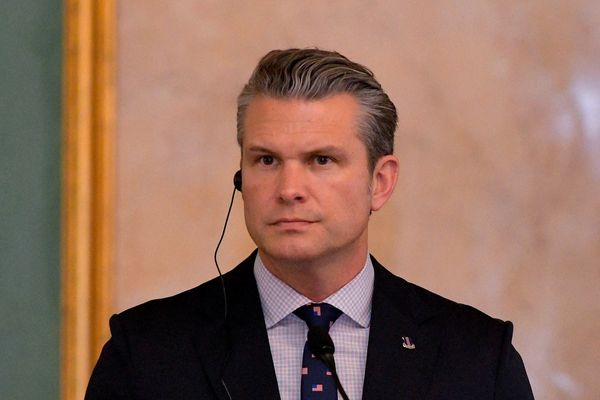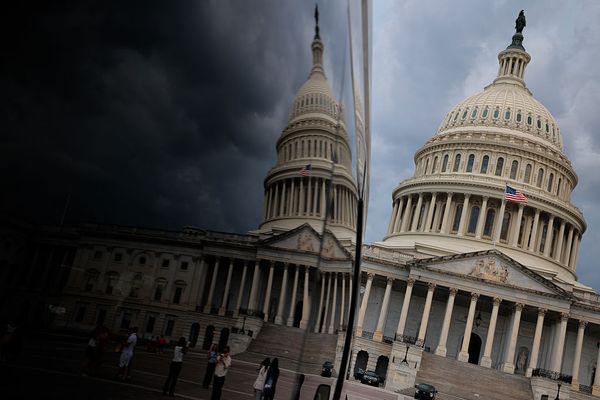
Britain’s employment market has shown signs of stabilising after a sharp rise in job losses earlier this year blamed on tax rises introduced by Rachel Reeves.
As the chancellor prepares for her 26 November budget, figures from the Office for National Statistics (ONS) showed the unemployment rate rose to 4.8% in the three months to August, up from 4.7% in July. City economists had forecast the rate to remain unchanged.
Separate figures from HMRC showed the number of workers on company payrolls dropped by 10,000 in September. However, the ONS said the slowdown in the jobs market was steadying after steeper declines earlier this year, which had been attributed to tax increases announced by Reeves last year and introduced in April.
“After a long period of weak hiring activity, there are signs that the falls we have seen in both payroll numbers and vacancies are now levelling off,” said Liz McKeown, the ONS director of economic statistics.
Highlighting a continued slowdown in the jobs market, single-month figures for August showed unemployment rose to 5.3%, the highest rate since October 2020.
The ONS’s figures are based on its widely criticised labour force survey, which has suffered from collapsing response rates. Experts have argued this leaves policymakers “flying blind”, risking decisions being taken based on flawed data.
Reeves is expected to raise taxes in the budget. However, business leaders have warned a weaker growth outlook will make it harder for her to raise taxes without harming the economy.
Martin Beck, the chief economist at the consultancy WPI Strategy, said: “April’s rise in employer national insurance contributions and the sharp hike in the national living wage have clearly weighed on hiring, but figures over the summer suggest the worst of the damage is passing.
“Even so, the jobs market remains more fragile than at any time in recent years.”
Pat McFadden, the work and pensions secretary, said the latest figures showed record numbers of people were in work and looking for a job. “However, there are still too many people locked out of employment or training and missing out on the security a good job provides,” he added.
Reflecting the cooling jobs market, annual growth in regular average weekly earnings, excluding bonuses, slowed slightly from 4.8% in the three months to July to 4.7% in the three months to August, matching City economists’ forecasts.
The ONS said wage growth had slowed in the private sector to its lowest rate in nearly four years, but public sector pay growth rose, reflecting some pay rises being awarded earlier than they were last year. Annual growth was 6% for the public sector and 4.4% for the private sector.
Total pay growth unexpectedly rose from a revised level of 4.8% in the three months to July to 5% in the three months to August, highlighting resilience in earnings despite a cooling jobs market.
The revision, from a previous July reading of 4.7%, also puts millions of people on course for a bigger state pension increase than previously expected. Under the triple lock the state pension is increased each year in line with whichever is the higher of 2.5%, inflation in September or July earnings.
Inflation figures for September are due to be released next week, with the most recent figures showing that the headline rate was 3.8% in August. That suggests pay growth will dictate the triple lock rise, with those on the full new state pension now receiving an increase £13 a year bigger than previously forecast, while those on a full basic state pension will get £7.80 more annually.
Strong wage growth has caused a headache for the Bank of England by stoking inflationary pressures, putting further interest rate cuts at risk after four reductions in the past year. However, a deeper slowdown in the jobs market could show the economy is deteriorating, supporting faster rate cuts.
Threadneedle Street kept interest rates on hold at 4% last month amid growing concern over inflation despite the slowdown in the jobs market and a weaker outlook for the economy.
Alan Taylor, a member of the Bank’s monetary policy committee, warned that Britain’s economy was at growing risk of suffering a “bumpy landing” as elevated interest rates and Donald Trump’s trade wars weigh on activity.
“As I see it, in an economy with rising unemployment and weak demand, wage settlements will be pushed down, and wage-led domestic inflation will not rekindle an upward spiral [for inflation],” he told an event in Cambridge on Tuesday.







